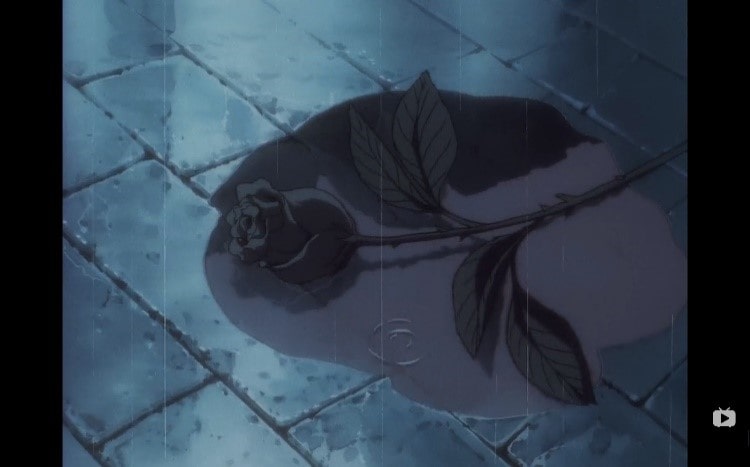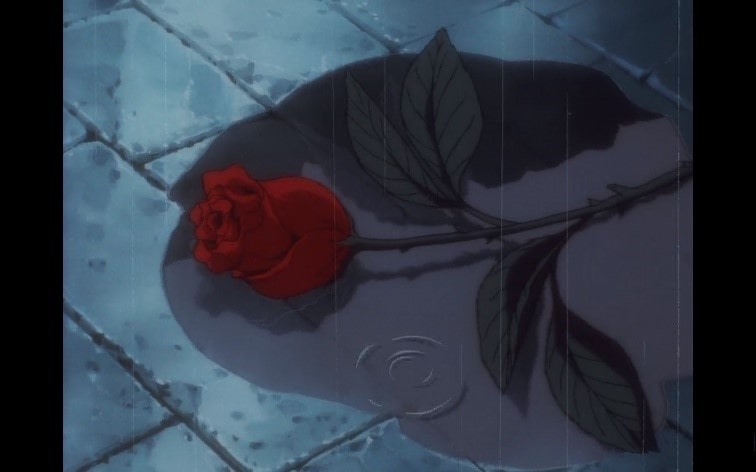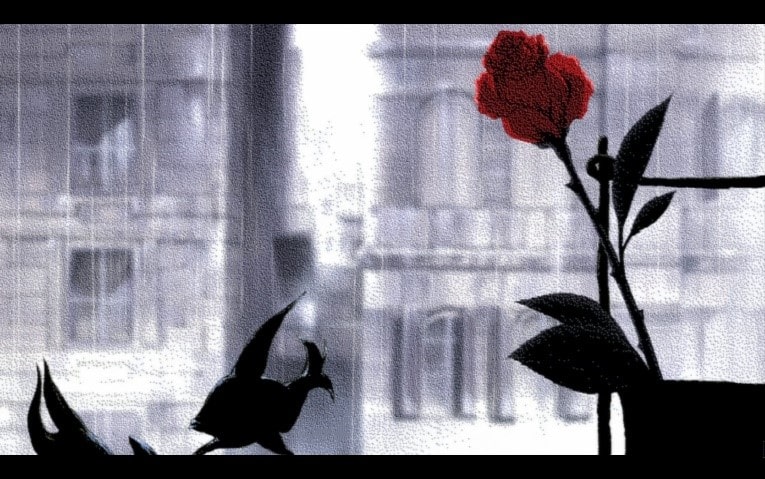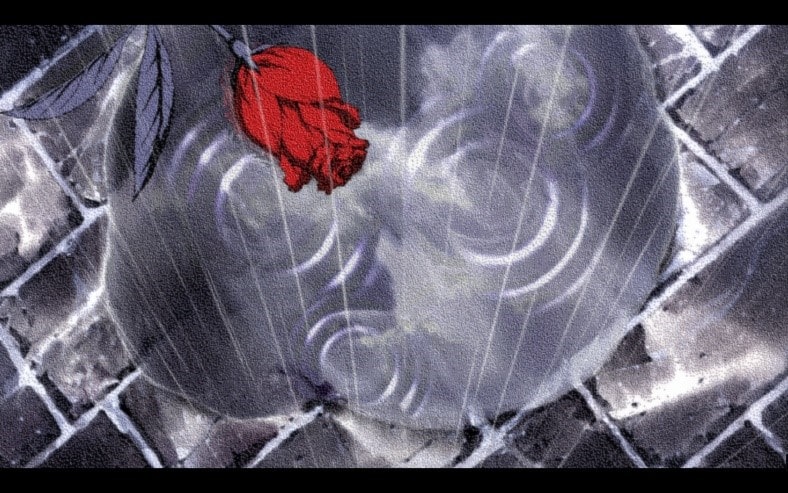Cowboy Bebop and Japanese Pop Culture in the Early Heisei Era
Yunjia Wang
Carnegie Mellon University – Japanese Studies
1. Introduction
What have you learned about Japanese culture from the work(s) of your choice? Cowboy Bebop, an animation directed by Watanabe Shinichiro (1965-) in 1998, tells a series of short stories happening in the future universe. It represents the transition of animation culture from Showa era to Heisei era, shows the decay after extreme prosperity and delivers the pursuit and struggle of individualism, liberalism and romanticism during the beginning of Heisei era. Throughout the characteristics that it represents as a Heisei era animation, decay after prosperity that it shows as well as the three topics of individualism, liberalism and romanticism that it expressed, Cowboy Bebop illustrates Japanese pop culture in the early Heisei era.
In late 1980s, Japanese experiences bubble economy and crashed at the beginning of 1990s. The bubble collapsed and the country fell into a severe financial crisis and economic stagnation, which is known as “Lost Decades” (Jesse). The Heisei era exactly started at this point, a period when people, especially young people, were helpless, felt empty and were confused about future. Under such background, the animation works in 1990s started to concentrate more on the characters self, showing the characters’ personalities, idealism and pursuit etc. In contrast, works prior Heisei era, i.e. in post-war Showa era, concentrate more on stories or topic which are typically deeply-rooted subjects. Cowboy Bebop is a famous and representative animation of the early Heisei period. It implies the epitome of Japanese culture and society during 1990s to some degrees and shows the people’s struggling and pursuit of individualism, liberalism and romanticism throughout the characters and stories.
Cowboy Bebop consists of a collection of short stories and stories were presented in different and novel story telling styles. Each single story could be categorized as a legend alone, while some are interconnected as a series to depict the story of the main characters (Goossen xxvi). The whole work might not fit in any of the categories proposed by Goossen well but could be categorized as a space western work as shown in the title “Cowboy Bebop”. The work also contains different cultural elements from that time. As Goossen said in his introduction, “any writer, regardless of age, is shaped by the events of his or her times” (Goossen xii). Animation work is also shaped by the events of its time. As mentioned above, young generation of people were confused about future due to the crash of bubble economy in the beginning of Heisei era. Many animation works during that time contains the expression of individualism, romanticism or other topics that are related to what people are looking for at that time.
The director, Watanabe Shinichiro, was born in 1965 in Kyoto, Japan. He started participating in animation works in 1990 and is still active in this area till now. According to Goossen’s division of generation, Watanabe Shinichiro and his works should be taken as “entertainers”: “Entertainers have to develop fresh acts to attract new audience. ……, they use their mesmerizing tunes to lead their readers beneath the surface of things, exploring the pitfalls and paradoxes of modern life” (Goossen xx). While short stories in the collection of Cowboy Bebop is simple and sometimes even vapid exteriorly, there is some deeper topics, including individualism, liberalism and romanticism, under the surface that lead audience to think about. On the other hand, “the Japanese have tended, throughout their entire modern period, to stress what makes them different from Western” (Goossen xxi). Cowboy Bebop, as well as Watanabe’s other works such as Samurai Champloo, mixes elements that is in extremely different styles and from diverse cultural backgrounds. While both Cowboy Bebop and Samurai Champloo mixed apparent many Western and Chinese elements, audience could still easily figure out that the stories are Japanese styled. Watanabe is obviously a director that has his own distinct and strong personal style on directing. He definitely found and successfully showed the uniqueness in Japanese cultures among the others.
2.1: Representation of the transition in animation characteristics from post-war Showa era to Heisei era
Cowboy Bebop could be one of the representative animations in early Heisei era, whose characteristics are clearly contrast to the animation works in post-war Showa era. Back in post-war Showa era, most animation works are mainly concerned on some topics rooted deeply such as anti-war, humanity etc. Examples include Tetsuwan Atomu (Tezuka Osamu, 1963), Grave of Firflies (Nosaka Akiyuki, 1967), Dororo (Tezuka Osamu, 1969), Gundam 0079 (Tomino Yoshiyuki, 1979), Nausicaä of the Valley of the Wind (Miyazaki Hayao, 1984) etc. These works put more efforts on depicting stories and reflecting the topic subjects instead of characterizing the characters. Therefore, characters in those works have more general settings and do not have any special merits and/or demerits. In contrast, animation works in Heisei era, headed with EVA (Anno Hideaki, 1995), have their main characters with some more personalized settings. Although their story settings are still rich, the story’s development is not working for a subject anymore. For instance, in Dororo (1969), the main character Hyakkimaru are finding his body part along his journey in the story, but his body was lost because his father exchanged his body with Kishin (Damon) to protect his country from war. Along the story, Dororo shows the conflict of humanities and express the topic of anti-war. On the other hand, in Cowboy Bebop, the characters are also on their journey in the story. However, the story settings of journey and background settings of the world inside the story does not work for a specific subject. Instead, the animation shows its topic mainly through the complex settings of characters. Still taking Dororo as a contrast example. Hyakkimaru is depicted as a character that learns to become a human through the story. All he wants is to get back his body and become a human, which is simple and pure. The author does not endow him with special personalities, likes or dislikes etc. The main conflict, where main topic is shown, is in the story’s settings where Hyakkimaru’s body and life conflict with his father’s country’s peace. In contrast, each character in Cowboy Bebop has some special and more complex settings. For example, one of the main characters, Faye, is money-grubbing but sometimes even does not pay attention to millions of dollars. Another example would be Spike, who is another main character in the story. His past was complex which is depicted throughout the whole work. He seems like uninhibited but takes emotional ties and relationships seriously. There are many specialties and internal conflicts inside characters and therefore the animation could show more through the character self. At the same time, characters in Cowboy Bebop do not have any missions or goals that are related to the society or the world, while Hyakkimaru’s life was closely related to a country’s life. Their pursuits are completely personal.
Returning to the animation works in Heisei era, in later works produced during 2000s to 2010s, there is even a genre that backgrounded with “Nichijou” (ordinary daily life) and focus mostly on characters’ depiction to convey their topics. Examples include Raki Suta (Kagami Yoshimizu, 2007), Toradora (Takemiya Yuyuko, 2008), K-ON (Yamada Naoko, 2010), Sound! Euphonium (Asada Nikki, 2015) etc. Therefore, animations in Heisei era mostly shows the beauty of life and the world, depicts characters personality and the way in which they pursue their idealism as well as propagates love and peace. This transition from concentrating more on story to focusing more on characters also illustrates trending to individualism.
2.2: Parallelization to real-world Japan in decay after prosperity
Cowboy Bebop parallelizes to the real-world Japan in the way of showing the decay after prosperity to the audience both from the background settings and from story settings. Although it does not tell audience explicitly at the beginning of the animation about the background, we can observe from the scenes and learn from people’s words. Human beings invited a huge machine “Gateway” such that people can easily transport inside solar system. However, there was a disaster happened on the Gateway around moon that caused people on Earth died and the world population decreases to only 1.5 billion. The Earth also became unsuitable for people to live due to the accident and rest of people immigrates to other planets include Mars, Venus and Ganymede etc. This is the diminishing human culture after a flourished period. On the other hand, there are also some aspects in the story settings showing the decay after prosperity. During the opening of first episode and ending music video, there are some scenes of roses. In the opening scenes of first episode, the rose drops to the ground. Everything was grey but later only the rose turns to blood red. Similar scenes can also be found during the ending music video. The world is colored in black and white, but the rose was in scarlet. In these scenes, the world is always in grey. The rose belongs to the main character, Spike, and the contrast color actually implies the contrast between his great romantic past and the current boring lonely real life. In both world settings and character settings, Cowboy Bebop parallelizes the decay of prosperity in real-world Japan.
2.3: Liberalism – the struggling and pursuit of freedom
Liberalism is about the limited government, individual rights, autonomy and freedom. In Cowboy Bebop, the topic is mostly focused on the pursuit of freedom. In addition to pursuing freedom, the conflict between being free and remaining bounding is also portrayed. For each of the main characters, all of them are boundless free, but they do also remain some persistent on bounded connections. This conflict between the freedom and bounding are actually showing what young people are struggling and is definitely part of the pop culture even till now. The animation shows audience not only the pursuit of freedom but also different ways of dealing this conflict of freedom and bounding as each of the main characters choose to deal with his or her bounding and freedom in a various way.
There are 5 main characters that have the adventure in universe together – Spike, Jet, Faye, Ed and Ein. All of them are boundless in the sense that they do not have something belonging to and they do not have any family or social bounding. While each of them balanced freedom and bounding in various ways, I will discuss three of them, Spike, Faye and Ed in details. Spike was belonging to an organization, red dragon, and had some great friends, who are just like his family members, as well as a lover there. The animation shows many short scenes on Spike’s past experiences. Although it does not state details about why he left the organization, we could find that after he left the organization, he lost his “family” and his lover. He is unbounded from then. In the first 23 episodes of the animation, Spike is depicted as uninhibited and seems like caring about nothing over the world. However, we actually could observe that Spike is extremely caring about his past and people who had been connected with him. For any events that are related to the organization red dragon, he is always serious and never refuse to accept the appointment. Especially in the last 2 episodes, he chooses to face his past completely. The conflicts between apparently freedom and inherently persistent on relationship that Spike had is not that common in real world. However, the contrast between the illusion of Spike’s freedom, which is exhibited from the first 90% of the animation, and the broken of this illusion that he does persist on his past connections suggests that one way of dealing with the conflict between freedom and bounding is to accept the bounding and face it in order to step into a new phase in life.
For Faye, she was asleep for 50 years since the disaster and just been waken up. Therefore, she is also free from family and social bounds. Although she is depicted as only caring fortune and are boundless at the beginning, we could find that she actually does not pay that much attention on money and instead she does care about her past. When she saw the video tape from her past, she became seriously as she never did before. In the end, she found the address of her family’s house, where she lived in the past. However, when she arrived there, she found that the house already became ruins. Finally, she chooses to let the past go and live in the moment. I think Faye’s settings show an emotion that many people share: we hope to be free but still want to be bounded such that existing a home to return to. This is exactly how many young people are struggling.
Finally, Ed is a 13-years-old girl that joined the group along the journey. Ed’s father is an explorer on Earth who concentrate more on his study than Ed. Even though Ed met his father on the Earth at the end, she chooses to start her own journey there. Her choice expresses the pursuit of freedom most explicitly that to put down the past and find her own future and goals freely on her own.
In conclusion, Cowboy Bebop shows the conflicts between freedom and bounding and the pursuit of freedom out of the conflicts through the characters settings and their choices regarding the conflicts. It exaggeratedly shows the struggling that people are facing to in their lives and delivers the pursuit of freedom which reflects people’s desire in the real world.
2.4: Individualism – personal values and desires precedence over society
Individualism usually refers the pursuit of personal value, desire and self-reliance which should precedence over the state or society. This work mainly delivers individualism in the way of showing how characters achieving their personal values and self-realization throughout characters’ behaviors. It also exhibits how characters take their personal values and desires precedence over the society, which is another significant point of individualism. The expression of individualism in Cowboy Bebop connects the work to Japanese pop culture as the transition from collectivism to individualism taken place under western influence in modern Japan. In early Heisei era Japan, people are looking for realization of personal values more than past days. In the animation, not only main characters, but all characters are pursuing their personal values by doing what they believe correct to achieve their idealism. In episode 8, Spike encountered a man, Roco, on Venus. Roco is then wanted because he stole a valuable plant. However, even after knowing Roco was wanted for a reward, Spike does not arrest him but even protect him from other hunters, because from their conversation, Spike got to know that he stole the plant was to treat his sister’s eyes. Spike’s decision is always based only on his personal favor of correction. He always pursues what he thought is correct to achieve his idealism. On the other hand, Faye is an example of working solely for her own desire or benefit. She precedes her own over anything else. In the stories, she often lies and cheats in order to maximize what she could earn. Cowboy Bebop conveys the individualism from different aspects throughout different characters. It emphasizes the personal values and benefits outweighing the society and others.
2.5: Romanticism – commitment to idealism
Romanticism refers to the persistence, sincerity, commitment towards faith and ideal. The pursuit of romanticism is expressed actually throughout the whole animation, as many plots showing people’s commitment towards idealism in various ways. One of the plots that shows romanticism the most is about Spike. As mentioned above, Spike is a person that is persistent on his past and he is the kind of person that could sacrifice everything, including life, towards his faith and idealism. After his lover been killed by the organization red dragon, he chooses to face his past and fight with his enemy and former best friend Vicious. Before he left, Faye even raises her gun to stop him going. Spike told her that, “One of my eyes is looking towards past, the other is looking at now. I was planning to dream and never wake up, but I wake up...I’m to make sure that I am truly alive.” He takes everything after he left the organization as a dream, as only the great romantic past is the real life to him. To Spike, only the life in the past was his ideal life. His “family”, his friends, his love, his connection, his idealism and everything was there. Therefore, he chooses to go back to face his past, what he persistent on, and commit to his idealism to prove that he is truly alive but not dreaming. From my view, this is the most romantic part throughout the animation that show the commitment towards idealism with all the persistent and sincerity no matter success or failure. As mentioned above in the introduction, many young people are confused about future about their future due to the crash of bubble economy. Even nowadays, younger generations are still puzzled over what they could do in the future. This is the spirit that people are seeking while they are confounded. Cowboy Bebop delivers the pursuit of romanticism throughout the collection of short stories, while Spike’s choice to face past is the most highlight one showing his persistency and commitment towards idealism.
Conclusion
What have you learned about Japanese culture from the work(s) of your choice? Cowboy Bebop, an animation directed by Watanabe Shinichiro in 1998, tells a series of short stories happening in the future universe. It represents the transition of animation culture from Showa era to Heisei era, shows the decay after extreme prosperity and delivers the pursuit and struggle of individualism, liberalism and romanticism during the beginning of Heisei era. The work is a Watanabe styled space western anime while it might also fit in the legend category according to Goossen (xxvi). It is one of the representative works that could show the transition in animation culture from post-war Showa era to Heisei era. It concentrates more on depicting characters and have only simple stories happening around characters, in contrast to post-war Showa era works which focus more on story and topic subjects. For its content, it has a background of disaster of its world, which together with the story setting of its main character shows audience the decay after prosperity parallelizing to real-world Japan. Throughout its collection of short stories, it shows the conflicts between freedom and bounding and the pursuit of freedom out of the conflicts which presents liberalism. It also depicts how the characters persistently pursue their personal values and desires precedence over everything else which connecting to the trend of pursuing individualism in modern Japan. Finally, it exhibits the romanticism through the character’s persistency, sincerity and commitment towards idealism. Throughout the three main topics conveyed in its content, the parallelization of decaying after prosperity and the characteristics that it represents as a Heisei era animation in contrast to Show era works, Cowboy Bebop illustrates Japanese pop culture during early Heisei era.
Work
Watanabe Shinichiro. Cowboy Bebop. (1998)
Bibliography
Goossen, Theodore W. (1997) Introduction. In Goossen ed. The Oxford Book of Japanese Short Stories (pp. xi-xxxi). Oxford: Oxford University Press.
Jesse, Colombo. (2012) Japan’s bubble economy of the 1980s. http://www.thebubblebubble.com/japan-bubble/
Shinichiro, Watanabe. (1998) Cowboy Bebop. http://www.cowboy-bebop.net/index.html.
Shinichiro, Watanabe. (2004) Samurai Champloo. http://www.newgin.co.jp/pub/machine/champloo/
Appendix

00:24 Episode 1

00:40 Episode 1

0:03 – 1:14 ED

1:26 – 1:36 ED